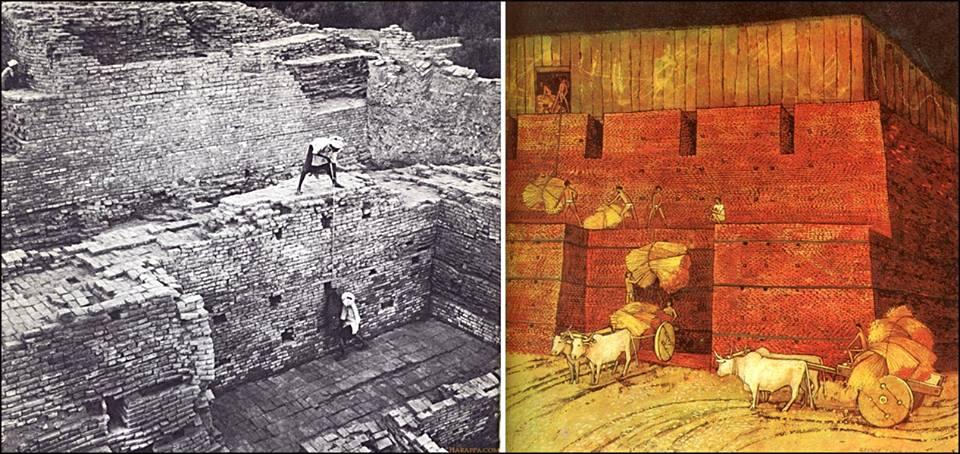By StephanieV. September 11th, 2014
Although there is no evidence to suggest that Mound F at Harappa or the "granary" at Mohenjo-daro (illustrated above) actually were granaries, this theory by archaeologists like Sir Mortimer Wheeler has taken hold in the public imagination. One can see how this happened in the compelling descriptions offered. Wheeler writes that "the granary stood on the steep verge of the citadel at Mohenjo-daro and at the western end of its north side was a recessed unloading bay. The figures hauling the sack up with a rope indicate the present size of the structure; the other figure (top left) is crouching in the opening of one of the ventilation ducts. Originally there was a reinforcing interlace of timber and the holes and grooves left after the decay of 5-inch square beams are clearly visible." Of the color image, he wrote: "This reconstruction of the granary at Mohenjo-daro is closely based upon the archaeological evidence as can be seen by the remains illustrated opposite [the black and white image]. The bullock carts are of the type still to be seen and are very similar to the toy carts found at Mohenjo-daro. The means by which the sheaves were hauled up into the granary is conjectural, but there is little doubt that this was the method used." (Wheeler, Civilizations of the Indus Valley and Beyond, 1966, pp. 20-21).
See also Mystery at Mound F #3.

